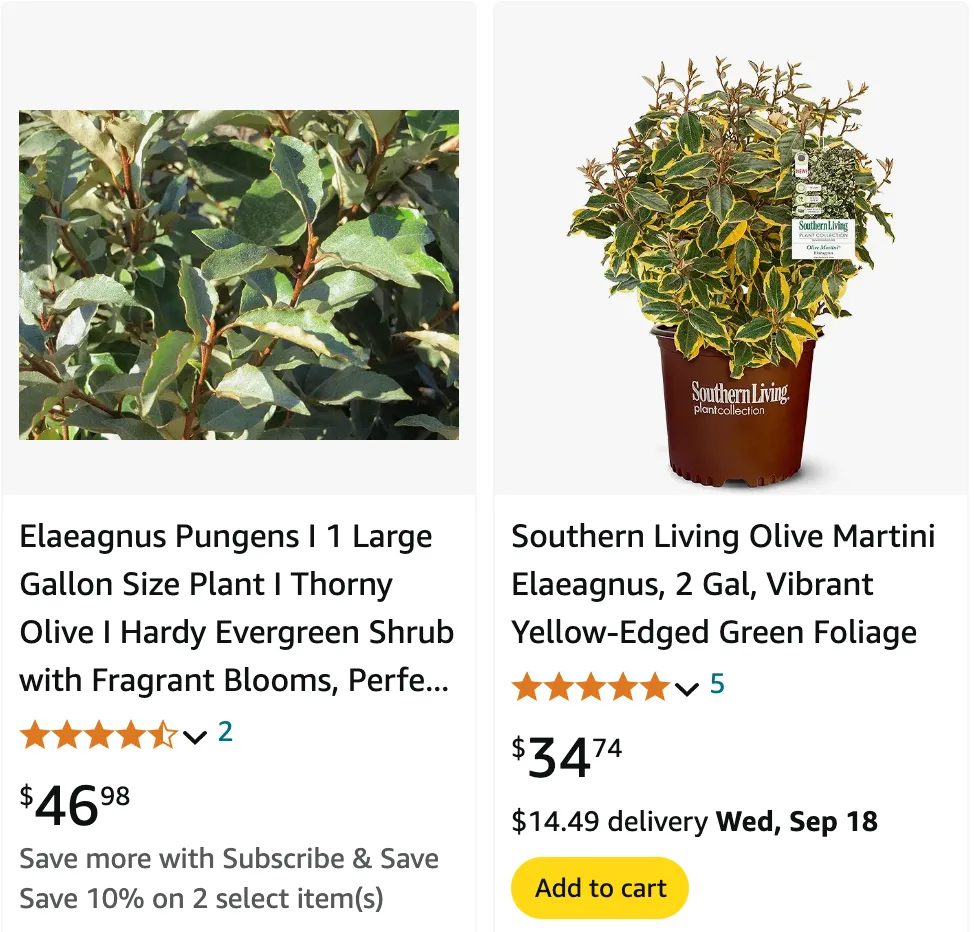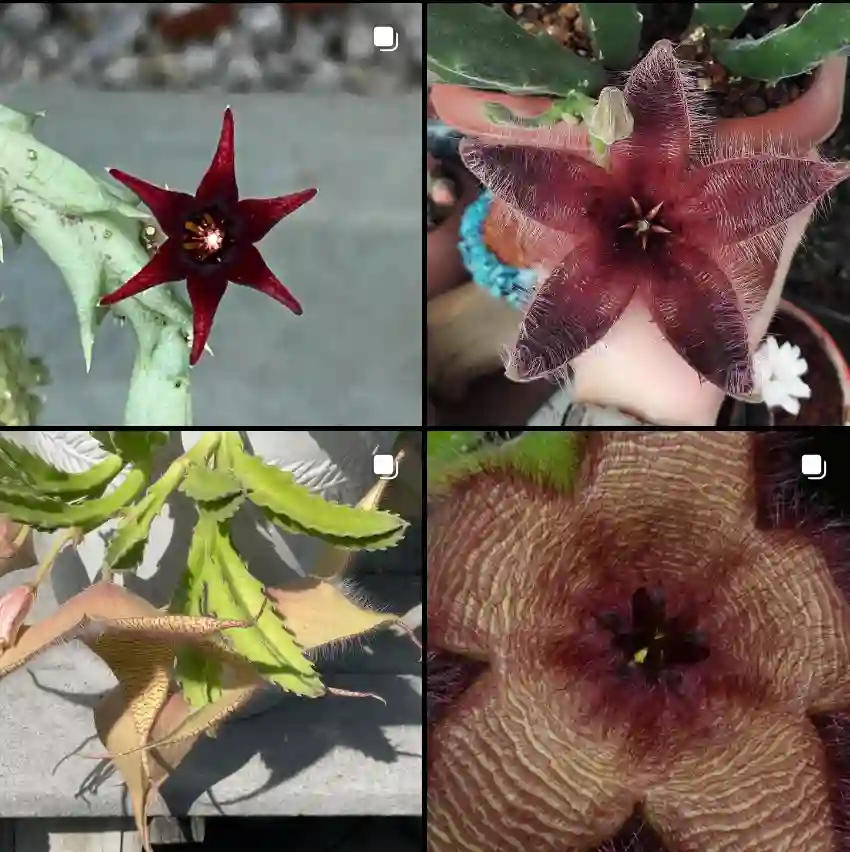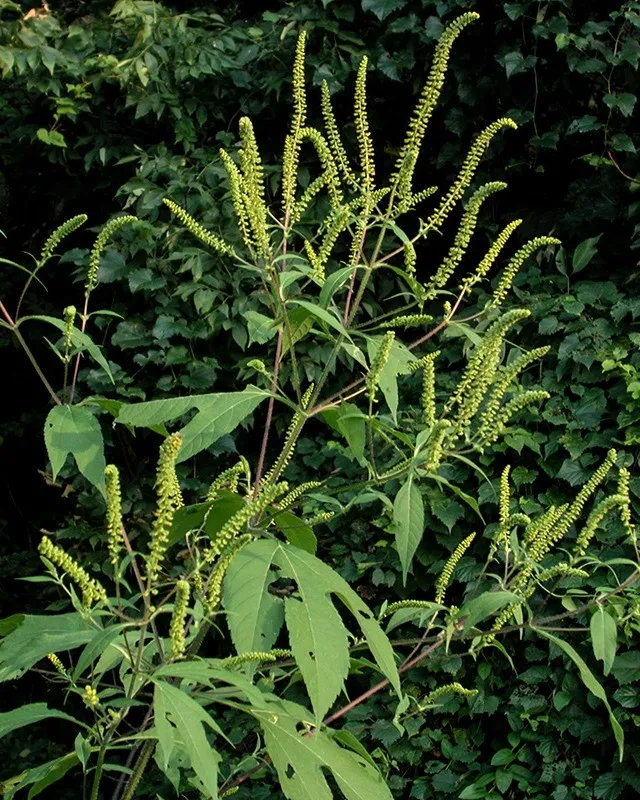
Elaeagnus: A Silver Lining in the Garden
I’ve always been drawn to plants that offer something unique, a touch of the unexpected in the landscape. That’s why I find myself captivated by the genus Elaeagnus, a diverse group of shrubs and trees with a subtle charm that often goes unnoticed. These plants belong to the Elaeagnaceae family, commonly known as silverberry or oleaster, possess a quiet beauty, shimmering with silvery foliage and often bearing fragrant flowers and colorful fruit.
What truly fascinates me about Elaeagnus is its adaptability. These tough plants thrive in a variety of conditions, from dry, sandy soils to heavy clay. They tolerate drought, wind, and even salt spray, making them ideal for challenging environments. This resilience, coupled with their ornamental value, has earned them a special place in my gardening repertoire.
Species in Elaeagnus
The genus Elaeagnus boasts a rich diversity, with over 50 species found throughout Asia, Europe, and North America. Here are:
- Elaeagnus angustata (Rehder) C.Y.Chang
- Elaeagnus angustifolia L.
- Elaeagnus annamensis S.Moore
- Elaeagnus arakiana Koidz.
- Elaeagnus argyi H.Lév.
- Elaeagnus bambusetorum Hand.-Mazz.
- Elaeagnus bockii Diels
- Elaeagnus bonii Lecomte
- Elaeagnus calcarea Z.R.Xu
- Elaeagnus caudata Schltdl. ex Momiy.
- Elaeagnus cinnamomifolia W.K.Hu & H.F.Chow
- Elaeagnus commutata Bernh. ex Rydb.
- Elaeagnus conferta Roxb.
- Elaeagnus courtoisii Belval
- Elaeagnus darenensis S.S.Ying
- Elaeagnus davidi Franch.
- Elaeagnus delavayi Lecomte
- Elaeagnus difficilis Servett.
- Elaeagnus elongatus Tagane & V.S.Dang
- Elaeagnus epitricha Momiy. ex H.Ohba
- Elaeagnus fasciculata Griff.
- Elaeagnus formosana Nakai
- Elaeagnus formosensis Hatus.
- Elaeagnus geniculata D.Fang
- Elaeagnus glabra Thunb.
- Elaeagnus gonyanthes Benth.
- Elaeagnus grandifolia Hayata
- Elaeagnus griffithii Servett.
- Elaeagnus grijsii Hance
- Elaeagnus guizhouensis C.Y.Chang
- Elaeagnus henryi Warb. ex Diels
- Elaeagnus heterophylla D.Fang & D.R.Liang
- Elaeagnus hunanensis C.J.Qi & Q.Z.Lin
- Elaeagnus indica Servett.
- Elaeagnus infundibularis Momiy.
- Elaeagnus jiangxiensis C.Y.Chang
- Elaeagnus jingdonensis C.Y.Chang
- Elaeagnus kanaii Momiy.
- Elaeagnus lanceolata Warb.
- Elaeagnus lanpingensis C.Y.Chang
- Elaeagnus laosensis Lecomte
- Elaeagnus latifolia L.
- Elaeagnus lipoensis Z.R.Xu
- Elaeagnus liukiuensis Rehder
- Elaeagnus liuzhouensis C.Y.Chang
- Elaeagnus longiloba C.Y.Chang
- Elaeagnus loureiroi Champ.
- Elaeagnus luoxiangensis C.Y.Chang
- Elaeagnus luxiensis C.Y.Chang
- Elaeagnus macrantha Rehder
- Elaeagnus macrophylla Thunb.
- Elaeagnus magna (Servett.) Rehder
- Elaeagnus × maritima Koidz.
- Elaeagnus matsunoana Makino
- Elaeagnus maximowiczii Servett.
- Elaeagnus micrantha C.Y.Chang
- Elaeagnus mollis Diels
- Elaeagnus montana Makino
- Elaeagnus multiflora Thunb.
- Elaeagnus murakamiana Makino
- Elaeagnus numajiriana Makino
- Elaeagnus obovatifolia D.Fang
- Elaeagnus oldhamii Maxim.
- Elaeagnus ovata Servett.
- Elaeagnus pallidiflora C.Y.Chang
- Elaeagnus pilostyla C.Y.Chang
- Elaeagnus pingnanensis C.Y.Chang
- Elaeagnus pungens Thunb.
- Elaeagnus pyriformis Hook.f.
- Elaeagnus × reflexa É.Morren & Decne.
- Elaeagnus retrostyla C.Y.Chang
- Elaeagnus rivularis Merr.
- Elaeagnus rotundata Nakai
- Elaeagnus s-stylata Z.R.Xu
- Elaeagnus sarmentosa Rehder
- Elaeagnus schlechtendalii Servett.
- Elaeagnus stellipila Rehder
- Elaeagnus × submacrophylla Servett.
- Elaeagnus takeshitae Makino
- Elaeagnus taliensis C.Y.Chang
- Elaeagnus tarokoensis S.Y.Lu & Yuen P.Yang
- Elaeagnus thunbergii Servett.
- Elaeagnus tonkinensis Servett.
- Elaeagnus tricholepis Momiy.
- Elaeagnus triflora Roxb.
- Elaeagnus tubiflora C.Y.Chang
- Elaeagnus tutcheri Dunn
- Elaeagnus umbellata Thunb. Plant FAQs: Autumn Olive – Elaeagnus Umbellata
- Elaeagnus viridis Servett.
- Elaeagnus wenshanensis C.Y.Chang
- Elaeagnus xichouensis C.Y.Chang
- Elaeagnus xingwenensis C.Y.Chang
- Elaeagnus xizangensis C.Y.Chang
- Elaeagnus yakusimensis Masam.
- Elaeagnus yoshinoi Makino
- Elaeagnus yunnanensis Servett.
How Do You Pronounce Elaeagnus?
Pronouncing Elaeagnus might seem tricky at first, but it’s actually quite simple. It’s pronounced “ee-lee-AG-nus.” Once you’ve said it a few times, it rolls off the tongue easily.
Are Elaeagnus Berries Edible?
Yes, Elaeagnus berries are edible! I’ve tasted them myself, and they have a pleasant, tart flavor. They can be eaten raw or used in jams, jellies, or even wine. The berries are high in antioxidants and are a great source of vitamins A, C, and E.
Is Elaeagnus Evergreen?
Most species of Elaeagnus are evergreen, which means they retain their leaves year-round. This makes them excellent for hedging or adding greenery to the garden during winter months. However, certain varieties, like Elaeagnus angustifolia, are deciduous, losing their leaves in the colder months.
Is Elaeagnus Poisonous?
Elaeagnus is not considered poisonous to humans. However, always consult a reliable source before consuming any part of the plant, especially if you’re unsure about the variety you have.
Is Elaeagnus Poisonous to Dogs?
Elaeagnus is generally not toxic to dogs. That being said, it’s always good practice to discourage pets from munching on garden plants to avoid any potential issues.
How Fast Does Elaeagnus Grow?
In my experience, Elaeagnus grows quite fast—it can grow up to 2 to 3 feet per year under ideal conditions. This makes it an excellent choice for creating a privacy hedge or filling in gaps in the landscape.
Can Elaeagnus Be Cut Back Hard?
Yes, you can cut back Elaeagnus hard if needed. I’ve done this myself, and it recovers well. Hard pruning can help control its size and shape, especially when it’s grown as a hedge. The best time to cut it back hard is in late winter or early spring, just before new growth starts.
How to Prune Elaeagnus?
Pruning Elaeagnus is simple. I usually prune mine in early spring to remove dead or damaged branches and shape the plant. You can also lightly prune in late summer if it becomes too unruly. Regular pruning helps maintain its structure and encourages denser growth.
When to Prune Elaeagnus?
The best time to prune Elaeagnus is late winter or early spring, before new growth begins. This timing encourages vigorous new growth while minimizing stress to the plant. If you need to perform light pruning, you can also do this in late summer or early fall.
How to Plant Elaeagnus?
Planting Elaeagnus is straightforward. Choose a sunny or partially shaded location with well-draining soil. I recommend digging a hole twice as wide and as deep as the root ball, then backfilling with soil mixed with compost. Water thoroughly after planting to help establish the roots.
Will Elaeagnus Grow in Shade?
Elaeagnus thrives in full sun but can tolerate partial shade. I’ve found that it grows more vigorously in sunny spots, but it can handle a bit of shade without any problems. Just keep in mind that too much shade may reduce its flowering and fruiting.
How to Propagate Elaeagnus?
You can easily propagate Elaeagnus from cuttings. I’ve had success with semi-hardwood cuttings taken in late summer. Simply cut a healthy, 6- to 8-inch branch, remove the lower leaves, and place it in a pot with a mix of soil and sand. Keep the cutting moist, and it should root in a few weeks.
Can You Grow Elaeagnus from Cuttings?
Yes, Elaeagnus grows well from cuttings. It’s one of the easiest ways to propagate the plant. Just take a semi-hardwood cutting, dip it in rooting hormone, and plant it in a well-draining medium.
Is Elaeagnus Invasive?
Some species of Elaeagnus, like Elaeagnus umbellata and Elaeagnus pungens, are considered invasive in certain areas, particularly in the United States. These plants can spread rapidly and outcompete native vegetation. Always check with local authorities before planting to ensure it’s not classified as invasive in your region.
When Does Elaeagnus Flower?
Elaeagnus typically flowers in late fall or early winter. The small, white, fragrant flowers are not showy but attract bees and other pollinators. I love the subtle fragrance it brings to the garden during this time.
Why Is My Elaeagnus Dying?
If your Elaeagnus is struggling, it could be due to several reasons. Overwatering, poor drainage, or nutrient deficiency are common culprits. In my experience, correcting the soil conditions and ensuring proper drainage often revives the plant.
Why Do Elaeagnus Leaves Turn Yellow?
Yellowing leaves on Elaeagnus can be a sign of overwatering, poor soil drainage, or nutrient deficiency. Adjusting watering habits and adding compost or fertilizer usually solves this issue. If you’re unsure, a soil test can help determine what nutrients might be lacking.
Are Elaeagnus Thorns Poisonous?
Elaeagnus thorns are not poisonous, but they can be sharp, so be cautious when handling the plant.
Can I Grow Elaeagnus Angustifolia in Zone 8b?
Yes, Elaeagnus angustifolia is well-suited to USDA hardiness zones 3-8, so it will thrive in Zone 8b. It’s a hardy plant that can handle various soil conditions and climates.
How Far Apart Do You Plant Elaeagnus?
When planting Elaeagnus as a hedge, I recommend spacing the plants about 5 to 6 feet apart. This gives them enough room to grow while creating a dense, attractive barrier.
How to Care for Elaeagnus?
Elaeagnus is generally low-maintenance. Regular watering during the first year helps establish the roots, but once established, it’s drought-tolerant. Fertilizing once a year in spring with a balanced fertilizer keeps it healthy. It also benefits from occasional pruning to maintain its shape.
Where Can I Buy Elaeagnus?
You can find Elaeagnus at most garden centers or plant nurseries, especially those that specialize in hedging plants. I’ve also had success ordering them online from reputable plant retailers.
Elaeagnus vs Privet Ligustrum: What’s the Difference?
While both Elaeagnus and Privet Ligustrum are commonly used for hedging, they differ in several ways. Elaeagnus is more drought-tolerant and produces edible berries, while Privet Ligustrum has smaller leaves and is less invasive in certain regions. Both make excellent privacy screens, but I find Elaeagnus offers more benefits in terms of wildlife attraction.
Elaeagnus is truly a remarkable plant—whether you’re looking for fast growth, easy propagation, or a tough evergreen hedge. Just keep an eye on its invasive tendencies and give it some space to grow!
If i die, water my plants!



